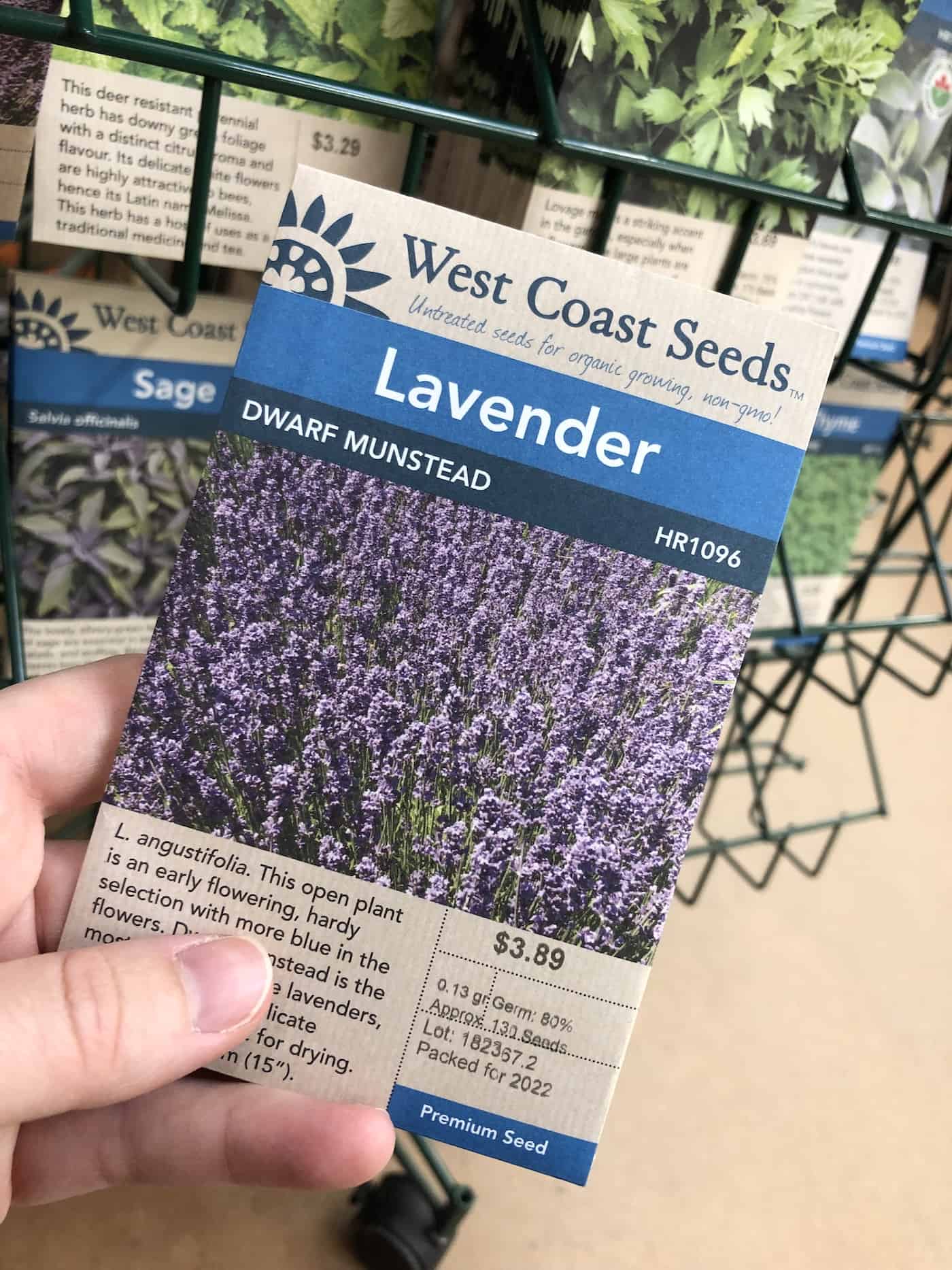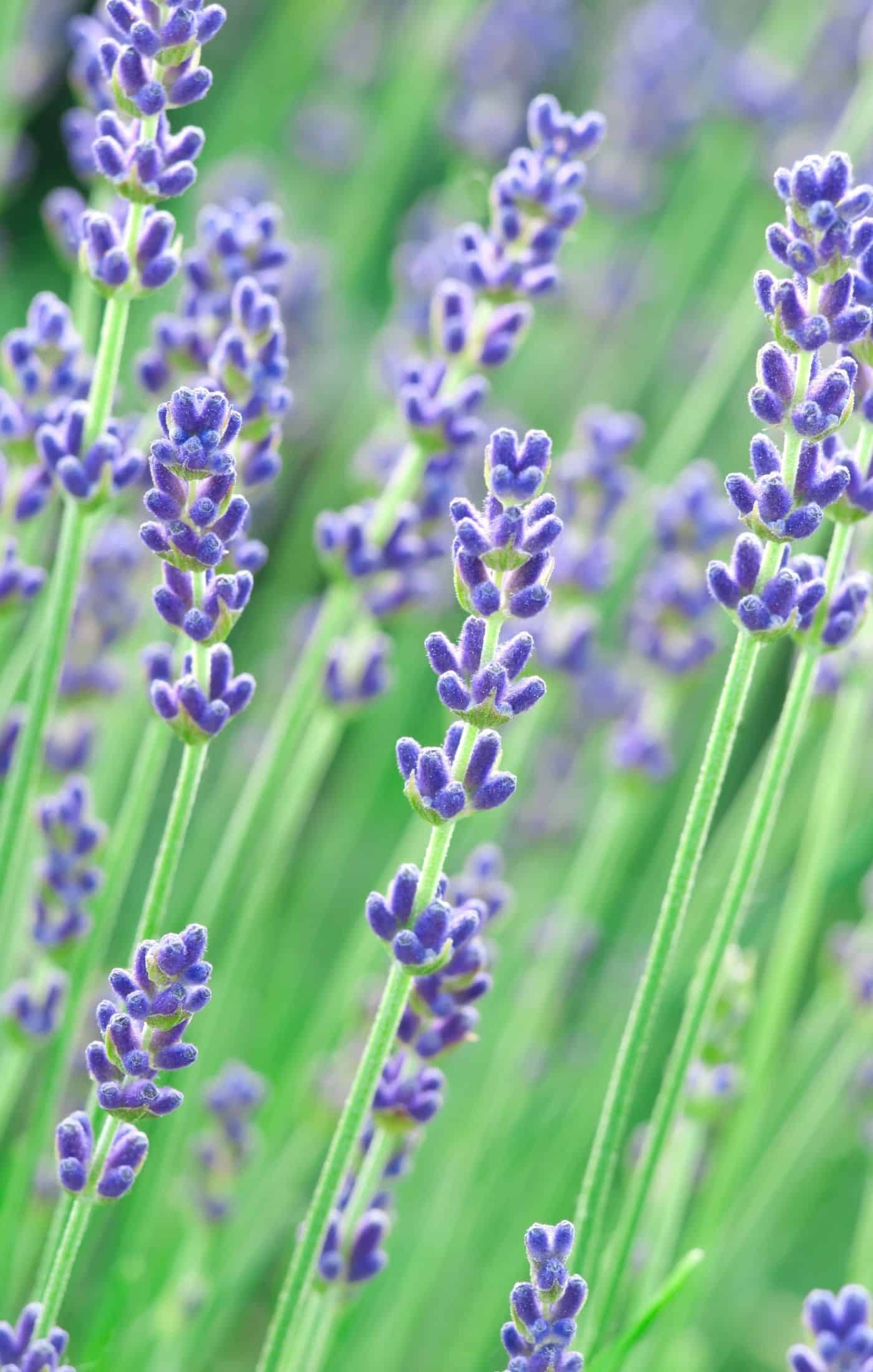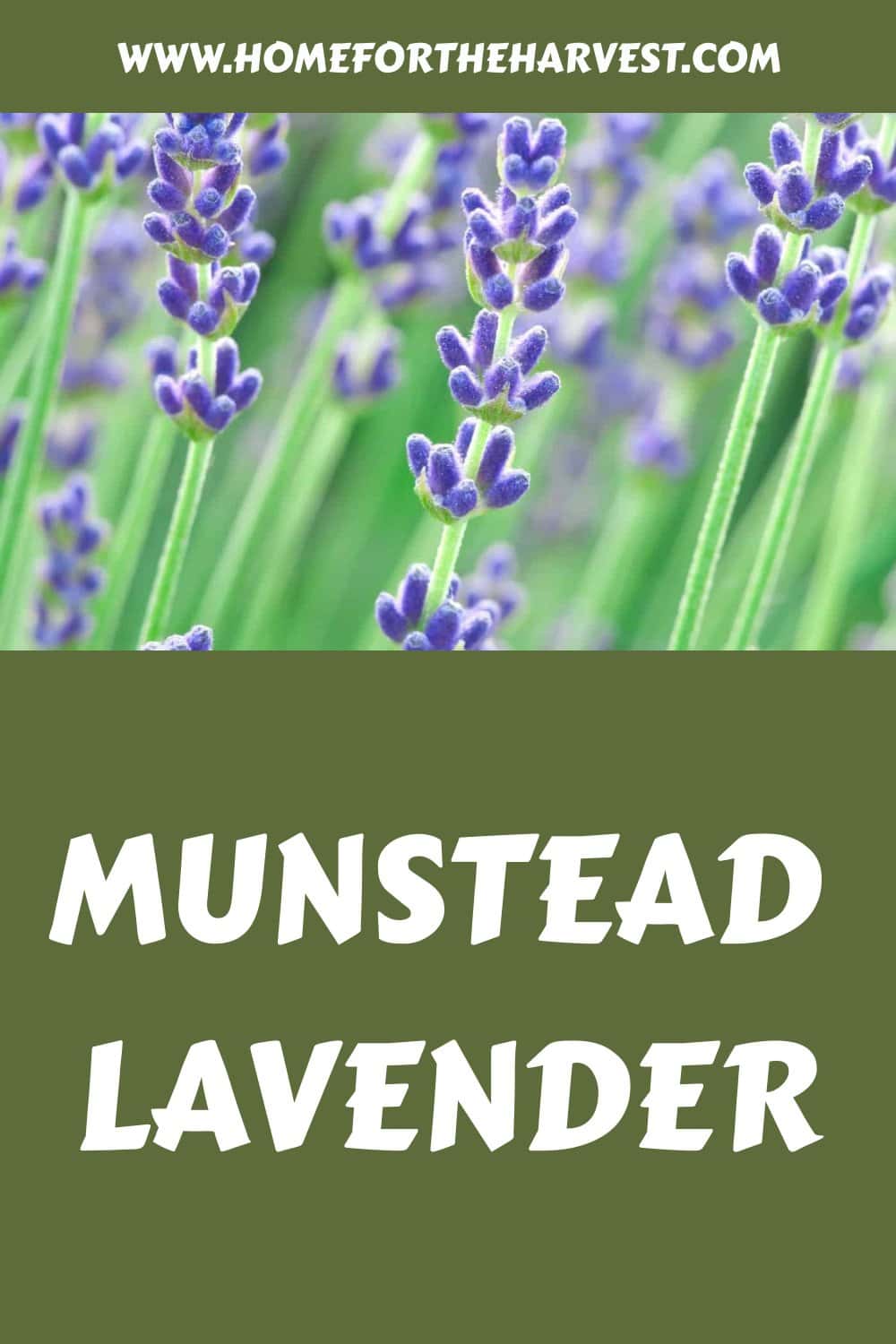Munstead lavender is an heirloom variety of English lavender considered to be the best cooking lavender. Munstead is known for its floral, sweet flavor in culinary applications.
These compact plants are also highly ornamental and are often used as edging plants in herb gardens and formal potagers. Established plants are drought tolerant and low maintenance, typically requiring fertilizing and pruning only once per year.
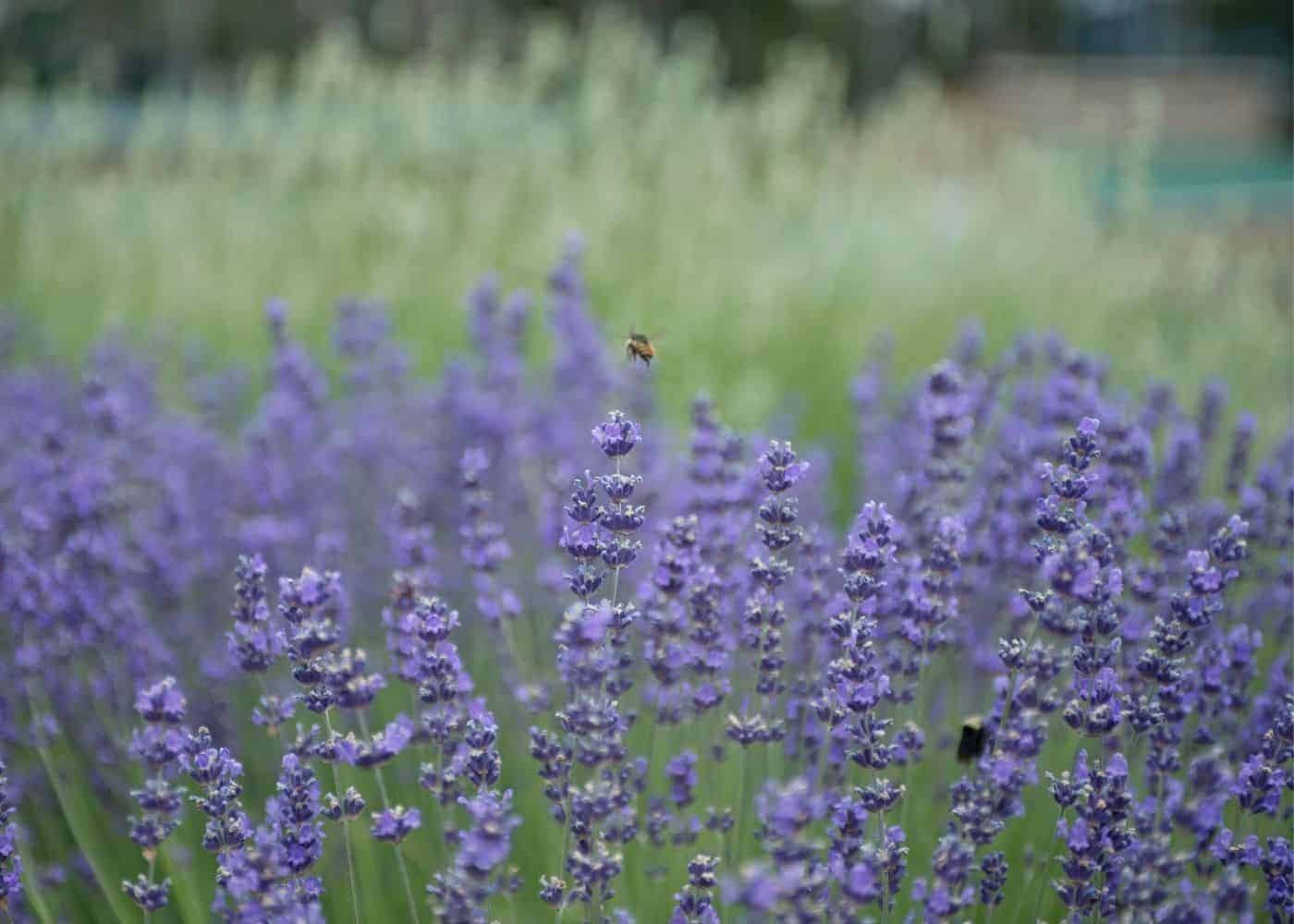
Munstead lavender basics
Munstead Lavender (Lavandula angustifolia ‘Munstead’) is an heirloom lavender cultivar known for its excellent flavor and aroma in cooking and baking. This variety is a favorite in the herb garden and in English cottage gardens and is the top lavender variety for cooking.
Munstead lavender is thought to have been bred by UK gardening great Gertrude Jekyll, a famous garden designer and plantswoman from England who popularized flower borders at her home garden of Munstead Wood. Munstead lavender is one of the most popular varieties of English lavender (True Lavender, L. vera).
Munstead Lavender can be planted alone as a single plant in the herb garden, as a low lavender hedge, or as a mass planting in a border garden. Established plants grow to reach about 24″ tall (60 cm) at maturity (14″ mound of gray-green foliage when not flowering). These small evergreen shrubs are cold hardy in the range of Hardiness Zone 5-9 and are resistant to both deer and drought conditions. Munstead, especially in mass plantings, is also more resistant to heat than many other English lavender varieties. Munstead can also be grown indoors as an attractive lavender topiary.
Munstead lavender is typically grown for culinary and herb applications. The purple flower spikes are generally harvested in early summer as soon as the first flowers open. Munstead lavender has a classic “true lavender” floral flavor that is both sweet and herbal. Common applications include lavender shortbread cookies, lavender-infused honey, and lavender syrup for handcrafted drinks and desserts. Munstead lavender can also be used in fragrant crafts, potpourri, soap making, perfumes, scented sachets, and floral arrangements (both dried and fresh).
“‘Munstead’ is reputed to have been raised by Gertrude Jekyll, United Kingdom. Introduced by Barr in 1916, it is well suited to hedging, and fragrant or ornamental use.”
Lavender: The Growers Guide, by Virginia McNaughton
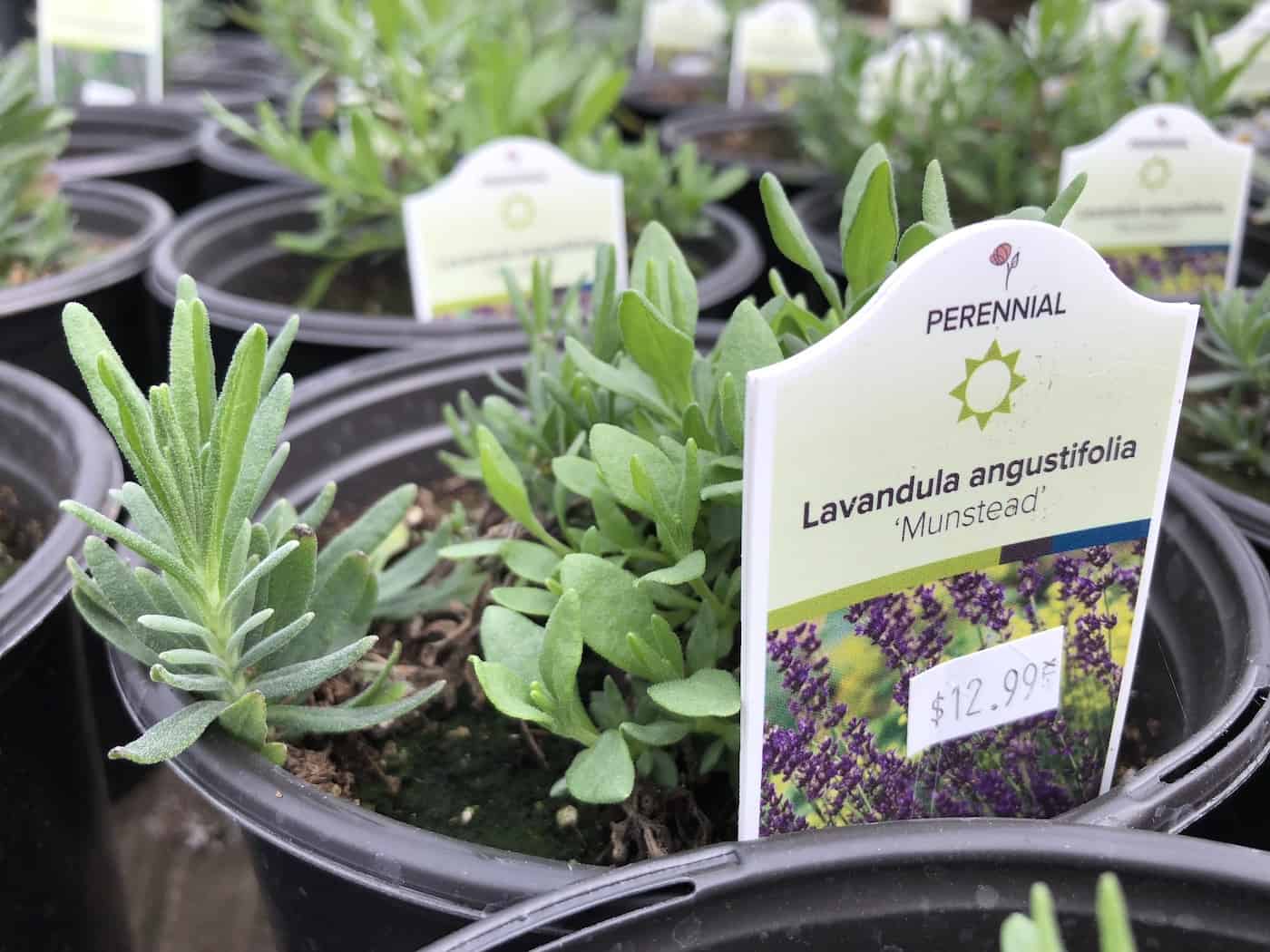
Where to buy Munstead lavender plants
Lavandula angustifolia ‘Munstead’ is widely available from local nurseries, larger garden centers, and online plant shops. Munstead Lavender plants are sold under a variety of common names, including ‘Munstead Blue Lavender’ and ‘Munstead Dwarf Lavender.’
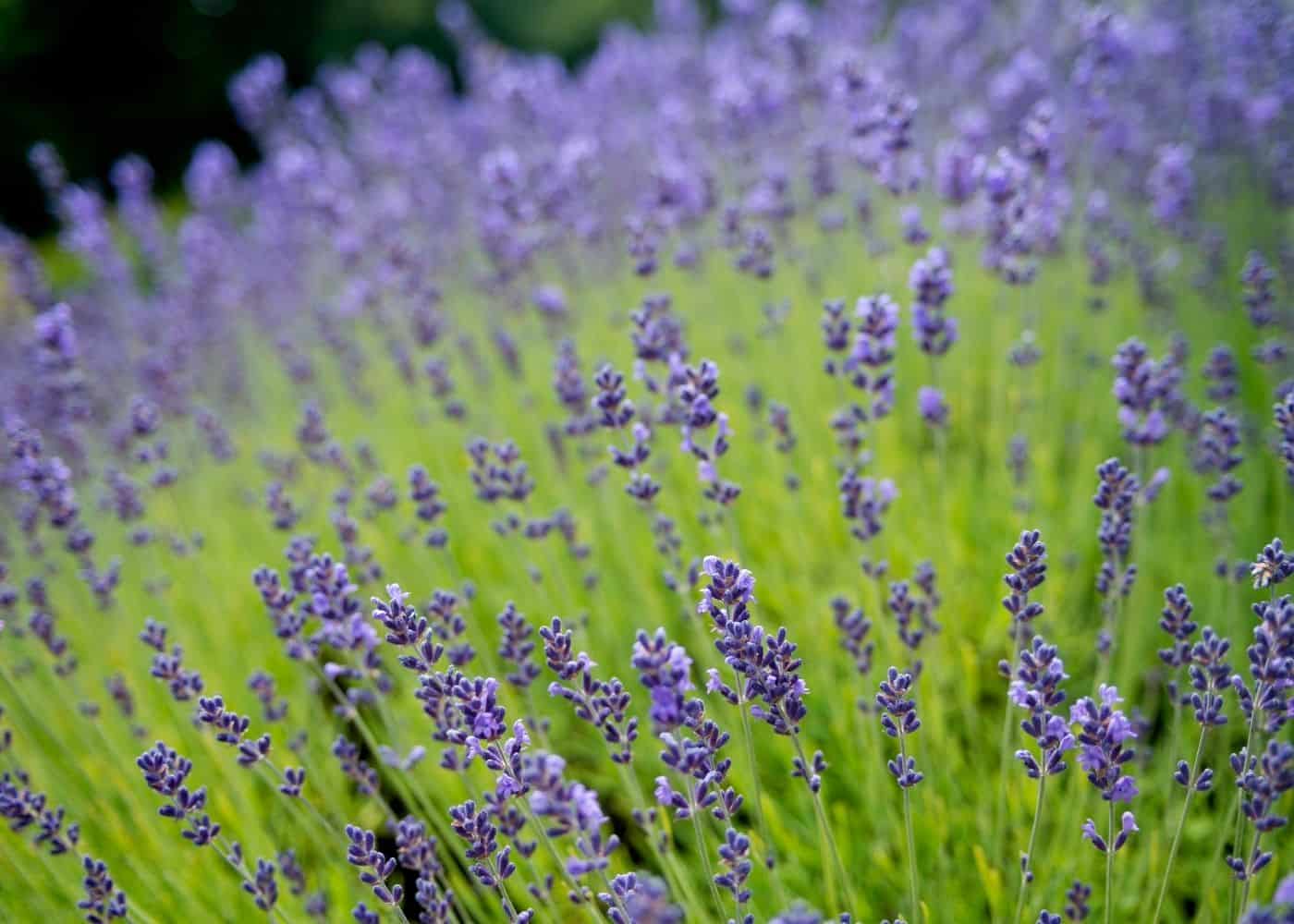
Where to plant Munstead lavender
Munstead Lavender can be grown in zones 5-9. This variety is a cultivar of English lavender, which is native to the Mediterranean region but has enough cold hardiness to be grown in cooler climates such as the UK and cooler North American climates.
Plants grown in the coldest winter temperature expected zones may require extra winter care, such as winter protection covers or mulch. Munstead lavender is also quite resistant to overly hot weather and is commonly grown as an ornamental lavender in hot arid climates and very warm winter areas.
Munstead lavender should be planted in a full-sun location with well-drained sandy soil. In terms of full sun, the plant’s leaves should receive at least 6-8 hours of full sun per day. Well-drained soil, like sandy loam at the planting site, allows excess water to pass through easily, leaving small air pockets in the soil voids (and avoiding excessive moisture).
Avoid planting lavender anywhere water tends to pool after rainfall. If you must plant in clay soil, amend the soil with organic compost, peat, and/or coconut coir to create a lighter, drier mix.
Munstead lavender grows best in a neutral to alkaline soil pH. While it is somewhat tolerant of acidic soil, it doesn’t thrive in these planting locations unless the soil pH is addressed. Overly acidic soil should be amended with dolomite lime before planting and potentially once yearly.
Munstead is one of the smallest varieties of English lavender, making it a good choice for a low-growing small evergreen shrub or as a container herb plant on the patio. The bushy compact-mounded form of this plant is also well-suited to edging around larger flower garden beds. It can also be planted in rock gardens or pea gravel patios.
Lavender is both deer-resistant and rabbit-resistant. This makes it a good choice for areas with many hungry rabbits and areas frequently visited by deer. Lavender is also bee-friendly and attracts a host of beneficial pollinators and insects, including bumblebees, hummingbirds, and butterflies.
How to plant Munstead lavender
Munstead lavender is best planted in early spring or in the fall. Transplanting woody perennials like lavender is usually most successful when done early in the morning, on a cloudy day, or when the planting area is otherwise shielded from harsh direct full sun. Planting outside of the proper planting time may stress the plant and delay the growth of the roots into the surrounding soil.
Here are the basic steps for planting Munstead Lavender:
- Dig a hole for the plant’s root ball. The hole should be about twice as wide as the pot the plant was sold in but no deeper than the potting soil inside the planter. Pour some water into the hole and watch to ensure the water drains down easily into the soil.
- Pull the potted plants out of the nursery pot. Take a look at the roots, if not too many roots are visible on the outside of the root ball, it can go straight into the planting hole. If there are thick white roots circling around the root ball (particularly at the bottom), you may wish to gently loosen the root ball and coax the thicker roots out of the circular pattern and into more of an outwards direction.
- Backfill the planting hole gently around the sides of the Lavender plant’s root ball. Use the soil that came out of the hole to backfill it, gently tamping it down as you go. If your soil is nutrient-poor, mix a starter fertilizer into the soil used to backfill the planting hole.
- Apply a ~1″ thick layer of compost as an organic mulch over the surface of the soil to keep weeds down, buffer soil from temperature swings, and provide a natural source of slow-release plant nutrients.
- Water the new spring-planted bulbs of Lavender thoroughly after planting.
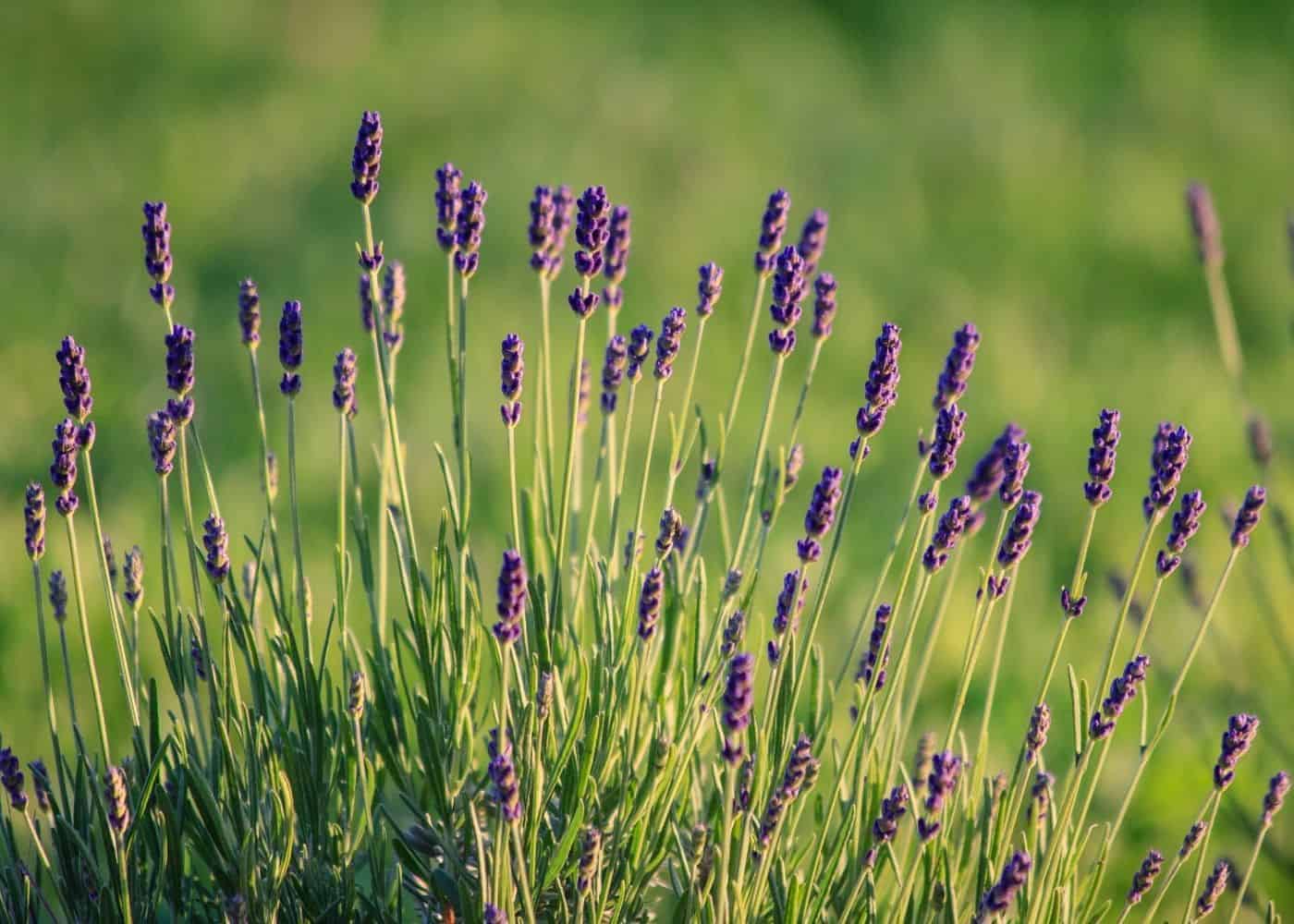
How to grow & care for Munstead lavender
Munstead lavender is a relatively low-maintenance plant to grow and care for.
Watering Munstead lavender
Munstead lavender is relatively drought-tolerant once established in the landscape, but it does take a year or two for the roots to grow enough to support the plant in dry soil. Carefully monitor the soil moisture for a year after planting and water whenever the top inch of soil dries out.
Watering may be infrequent in moist spring/fall weather, but the plants may require irrigation several times a week during heatwaves or dry summer weather. Watering right at the soil level (such as with drip irrigation) is preferable to overhead watering, as moistening leaves regularly can lead to fungal disease. The disease can be more of a problem in wet climates with high humidity.
Once the plants have well-established perennial roots packed in the surrounding soil, Munstead Lavender is tolerant of dry soil, and the plants don’t need regular watering in most conditions. Don’t overwater established plants, as overly damp soil can stress the plant and potentially lead to root rot if the soil is poorly drained. Limit supplemental watering except in overly arid climates. Munstead Lavender tends to be low maintenance once established in the landscape.
Fertilizing Munstead lavender
A Munstead Lavender plant may need to be fed with an organic fertilizer when the soil is nutrient-deficient. Lavender plants can be fed with fertilizer in the spring after the plants break winter dormancy and again in late summer after flowering has finished.
Timing fertilizing will depend on the USDA planting zone number, with cooler climates waiting for the ground to thaw prior to fertilizing plants and warm winter areas fertilizing as early as late winter. Follow the instructions on the specific fertilizer product for application details. In planting locations with naturally acidic soil, you may also wish to add lime in the spring or in autumn.
Pruning Munstead lavender
As a cultivar of English Lavender, Munstead plants require annual pruning for best results. Munstead Lavender is most commonly pruned in the late summer after the plant flowers. This annual pruning is generally quite significant on mature plants, removing 1/3 to 1/2 of the foliage. For instance, if most stems with leaves are about 18″ long, they can be cut back to 9″-12″ long each.
Munstead plants may also be lightly sheared along the sides in the early spring if planted in a formal hedge in a potager. Spring is also a good time to look for and remove any stems that died during the winter. Also, remove any stems that are dead, dying, diseased, or damaged. These stems can be removed right down to the base of the plant.
If Munstead Lavender is not pruned hard annually, these plants tend to develop woody centers that are difficult to shape in future years. Gardeners in warmer climates who prefer lower-maintenance plants may consider planting French Lavender or Spanish Lavender instead of Munstead English Lavender.
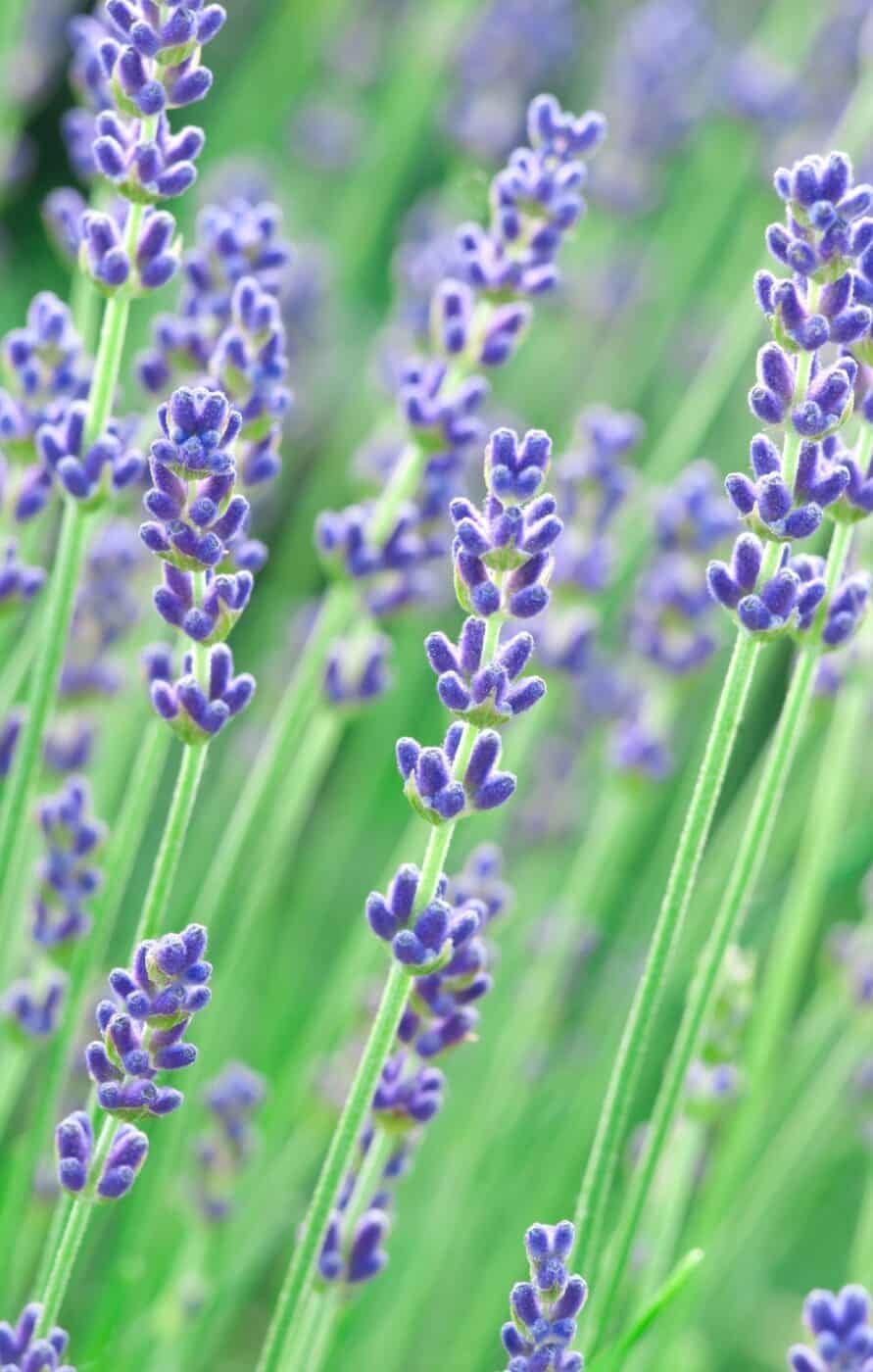
Harvesting Munstead lavender
Munstead Lavender is typically harvested in early summer as the first flowers start to bloom on the plant. Harvested flowers can be used in cooking, fresh bouquets, or dried for fragrant crafts.
When to harvest Munstead lavender
Timing the lavender harvest depends upon how the lavender will be used. Most gardeners try to harvest Munstead Lavender as the first flowers on the spike open, as this is when the flowers reach maximum flavor and fragrance. If left to flower on the plant, the lavender can still be harvested, but it may have less flavor, and the dried flowers tend to fall off the stalk.
How to harvest Munstead lavender
Harvest your Munstead Lavender flower spikes in the morning. Wait until the morning dew has dried but try to harvest the flowers before the heat of the day becomes too intense. Use a clean and sharp pair of scissors or pruning shears to cut each stem off the plant. You can remove the stem down to half its height. For instance, a flower stem that stretches 20″ from ground level to the tip of the flower spike can be cut to 10″ long in most cases.
Using Munstead lavender
Munstead Lavender flowers are well suited to use in cooking, potpourri, and fragrant crafts. Due to its fragrant flowers, Munstead is considered the best variety of lavender for culinary applications, including baked goods, summer drinks, and specialty dessert syrups.
A lavender recipe may call for either fresh or dried lavender. Wash the lavender thoroughly prior to using it in cooking. To dry Munstead Lavender, either hang them or lay them flat to dry in a warm location with good air circulation. Lavender can also be dry-roasted in the oven.
Similar lavender varieties to consider
If Munstead Lavender is unavailable or otherwise not the variety of choice, there are plenty of other cultivars to consider. If culinary use is desired, use Avice Hill Lavender or Hidcote Lavender if Munstead is not available. Lodden Blue Lavender is a good choice for those looking for a slightly smaller plant that still has darker flowers. For a particularly compact plant with purple flowers, try Thumbelina Leigh Lavender.
Hidcote lavender vs Munstead lavender
Munstead Lavender is commonly compared to Hidcote lavender. Both cultivars are heirloom varieties bred in the UK, though Munstead is thought to be several decades older than Hidcote. Both types tend to reach about 24″ (60 cm) tall, and both have dark purple flowers. While both types are excellent for culinary applications, Mustead Lavender is typically seen as the best variety of lavender for cooking while Hidcote is more often preferred for ornamental or scented gardens.
Common plant diseases affecting Munstead lavender
While English Lavender plants like Munstead are generally quite hardy, there are several fungal, bacterial, and viral diseases that can affect them.
Fungal diseases like leaf spot fungi (Septoria lavandulae) and root rot caused by Phytophthora mold can affect Munstead Lavender. This generally happens in areas with high rainfall and/or frequent overhead watering. Root rot typically also occurs where the soil does not drain out excess water. Take care to ensure soil is draining well and that air is circulating around the base of the plant. Disease is most common in rainy, humid climates.
English Lavender plants are sometimes affected by Alfalfa Mosaic Virus, which creates a yellow “mosaic” pattern on the leaves of affected plants. This virus is thought to be spread by aphids and also by non-sterile pruning tools.
Common garden pests affecting Munstead lavender
Munstead Lavender plants are sometimes attacked by garden pests such as Spittle Bugs, Mealy Bugs, and Aphids. These bugs can generally be sprayed off the plant with a sharp stream of water but may require an organic pesticide spray once the pests have become established on the plant(s).
English Lavender is rarely attacked by mammals due to its strong scent. Deer generally avoid Munstead English Lavender completely, especially if the plant has flowers on it. Young plants may be attacked by rabbits and other smaller burrowing mammals. Rabbits tend to dig around the roots rather than attack the foliage or flowers.
